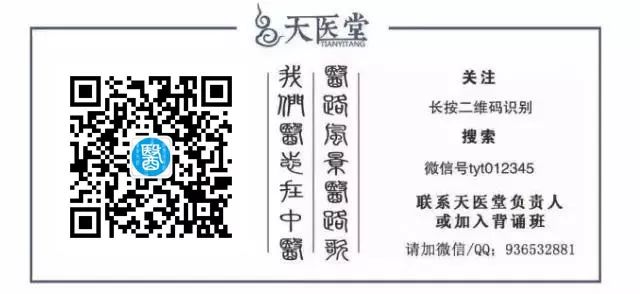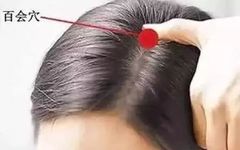Introduction: Identifying acupuncture points is a fundamental skill for every practitioner of Traditional Chinese Medicine (TCM). However, the human body contains numerous and complex acupuncture points, making it challenging to locate them accurately. Today, I will present the effects and locations of commonly used acupuncture points to help you find them accurately!
1. Common Acupuncture Points on the Head and Face
1. Baihui (Hundred Meetings)
[Location] At the intersection of the midline of the head and the line connecting the tips of both ears.
[Indications] Headache, dizziness, hypertension, prolapse of the rectum, etc.
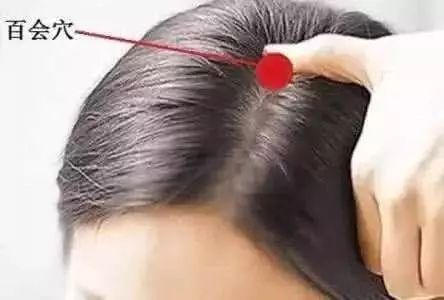
2. Taiyang (Sun)
[Location] Between the end of the eyebrow and the outer corner of the eye, about 1 inch back in a depression.
[Indications] Headache, migraine, eye diseases, facial paralysis.
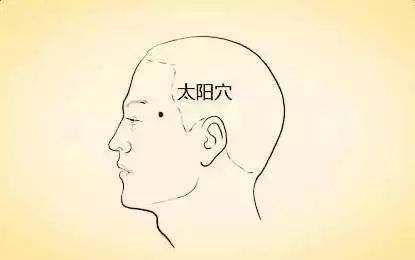
3. Yangbai (Yang White)
[Location] On the forehead, directly above the pupil, 1 inch above the eyebrow.
[Indications] Facial paralysis, headache, eye diseases.
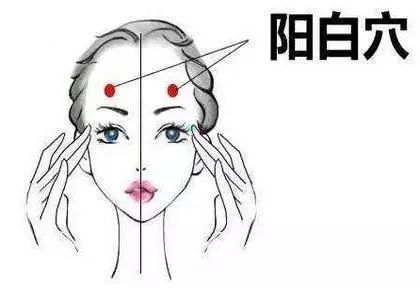
4. Zanzhu (Gathering Bamboo)
[Location] At the inner end of the eyebrow.
[Indications] Headache, eye diseases, pain in the brow ridge, facial paralysis.
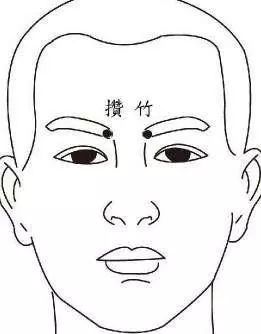
5. Jingming (Bright Eyes)
[Location] With eyes closed, 0.1 inch above the inner canthus of the eye.
[Indications] Various ophthalmic conditions, facial paralysis.
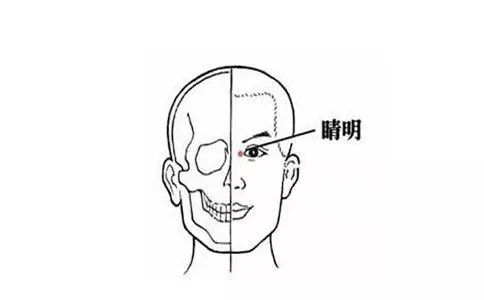
6. Fengchi (Wind Pool)
[Location] In the depression between the sternocleidomastoid muscle and the trapezius muscle, level with the mastoid process.
[Indications] Common cold, headache, dizziness, stiff neck, eye diseases, hypertension.
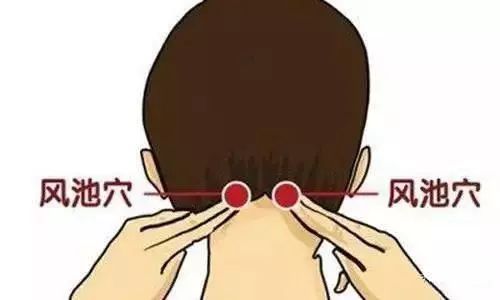
7. Fengfu (Wind Palace)
[Location] 1 inch directly above the midpoint of the hairline at the back of the head.
[Indications] Dizziness, stiff neck, aphasia after stroke, hysteria, sore throat, etc.
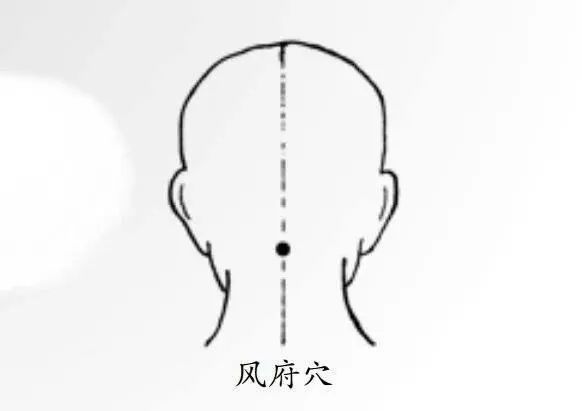
8. Yingxiang (Welcome Fragrance)
[Location] 0.5 inch beside the wing of the nose.
[Indications] Rhinitis, nasal congestion, facial asymmetry.
9. Yintang (Seal Hall)
[Location] At the midpoint between the two eyebrows.
[Indications] Headache, dizziness, nasal diseases, skin diseases, hypertension.
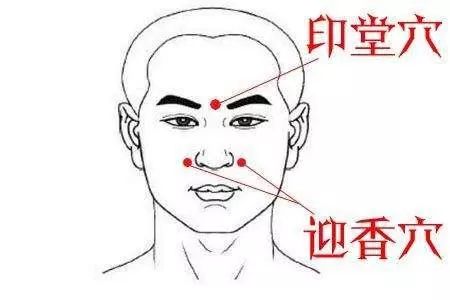
10. Renzhong (Human Center)
[Location] At the junction of the upper third and lower two-thirds of the philtrum.
[Indications] Coma, mania, facial asymmetry, pain in the lumbar spine.
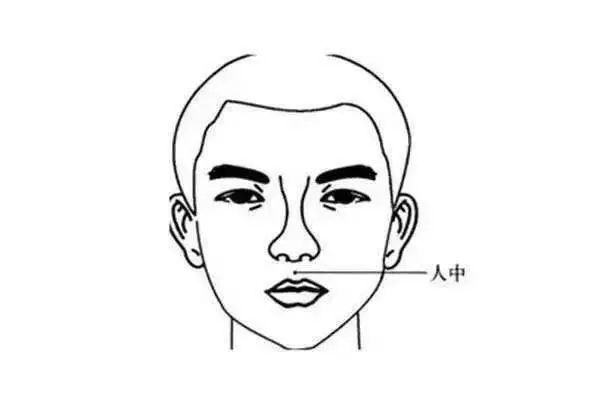
11. Shenting (Spirit Court)
[Location] 0.5 inch directly above the midpoint of the hairline at the front.
[Indications] Headache, dizziness, eye diseases, nasal issues, mania.
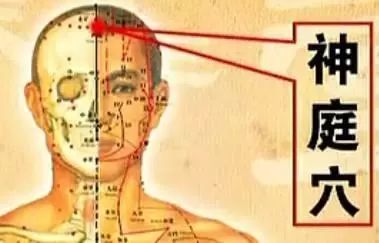
12. Touwéi (Head Maintain)
[Location] 0.5 inch above the hairline at the forehead.
[Indications] Headache, dizziness, eye diseases.
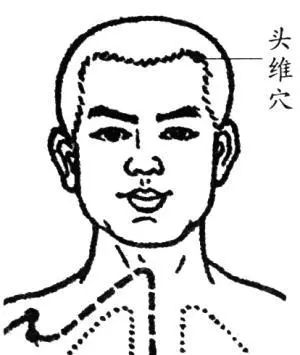
2. Common Acupuncture Points on the Chest and Abdomen
13. Danzhong (Chest Center)
[Location] Between the two breasts, on the midline of the sternum, at the level of the fourth intercostal space.
[Indications] Bronchitis, asthma, chest pain, intercostal neuralgia, coronary heart disease.
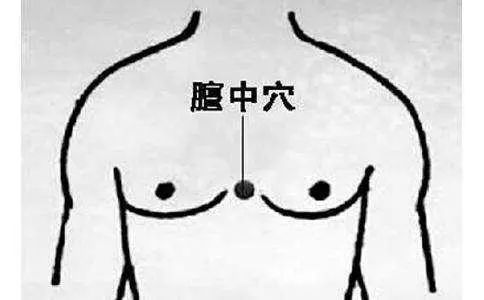
14. Zhongwan (Middle Stomach)
[Location] On the abdomen, on the midline, 4 inches above the navel.
[Indications] Stomach pain, gastric ulcer, chronic gastritis, vomiting, hiccups, etc.
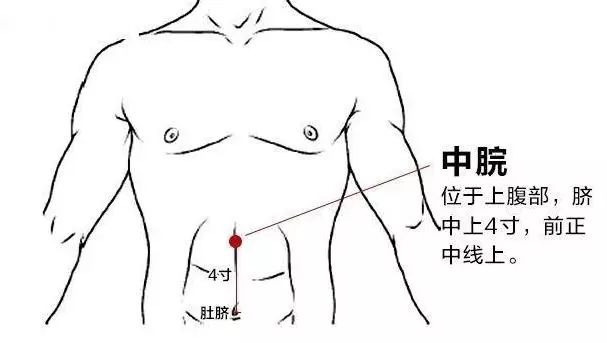
15. Tianshu (Heavenly Pivot)
[Location] On the abdomen, 2 inches beside the navel.
[Indications] Acute and chronic gastritis, enteritis, dysentery, constipation, etc.
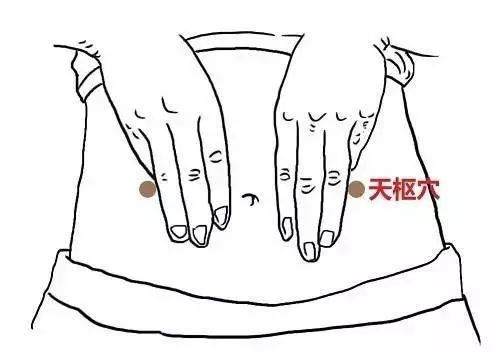
16. Qihai (Sea of Qi)
[Location] On the abdomen, 1.5 inches below the navel on the midline.
[Indications] Abdominal distension, abdominal pain, qi deficiency.

17. Guanyuan (Pass of the Source)
[Location] On the abdomen, 3 inches below the navel on the midline.
[Indications] Abdominal pain, abdominal diseases, urinary tract infections, menstrual irregularities, sexual dysfunction.
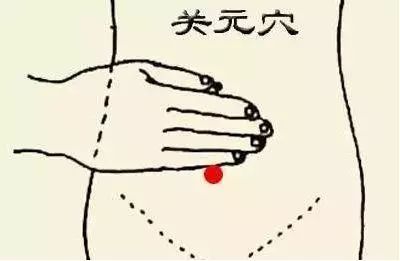
18. Daheng (Great Horizontal)
[Location] 4 inches beside the navel.
[Indications] Diarrhea, constipation, abdominal pain.
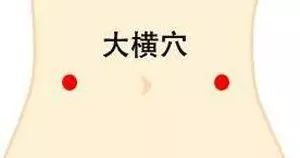
The human meridian system is a vast pharmacy! Regularly massaging acupuncture points can help utilize the body’s own medicinal resources, reducing reliance on external medications. In fact, taking medicine involves utilizing the various properties of the medicine, through digestion in the stomach, detoxification in the liver and kidneys, and absorption in the intestines, to provide essential nutrients that the organs are particularly lacking, achieving a balance of yin and yang in the body. If we can achieve such effects without relying on external intake, why not?
3. Common Acupuncture Points on the Upper Limbs
19. Quchi (Pool at the Bend)
[Location] With the elbow bent at a right angle, at the midpoint of the line connecting the lateral epicondyle of the humerus and the elbow crease.
[Indications] Pain in the upper limb joints, paralysis, numbness, hypertension, high fever, allergic diseases, skin diseases, etc.
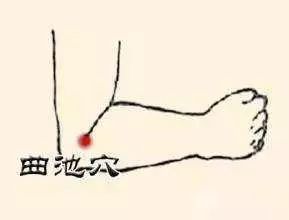
20. Hegu (Joining Valley)
[Location] At the midpoint between the first and second metacarpal bones.
[Indications] Common cold, diseases of the five sense organs, facial nerve paralysis, neurological diseases, various pains, etc.
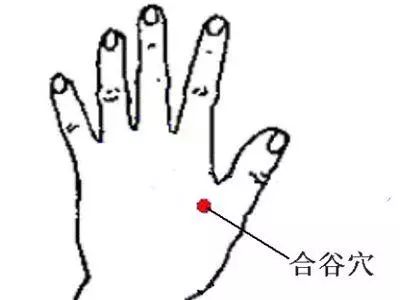
21. Chize (Cubital Marsh)
[Location] At the elbow crease, on the lateral side of the biceps tendon.
[Indications] Cough, asthma, sore throat, arm pain, elbow joint pain, skin diseases, etc.
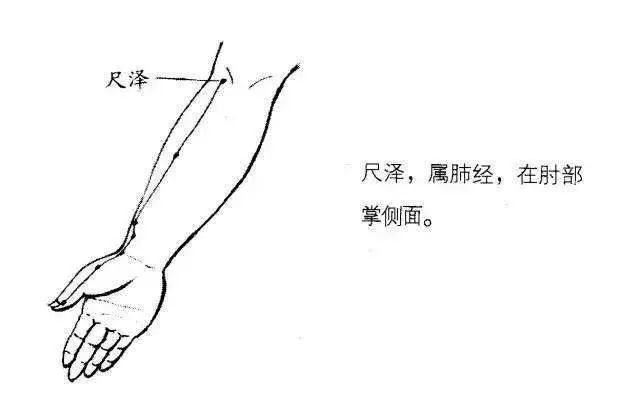
22. Neiguan (Inner Pass)
[Location] With the arm extended and palm facing up, 2 inches above the wrist crease, between the two tendons.
[Indications] Heart diseases, neurological disorders, mental disorders, stomach pain, vomiting, various pains, etc.
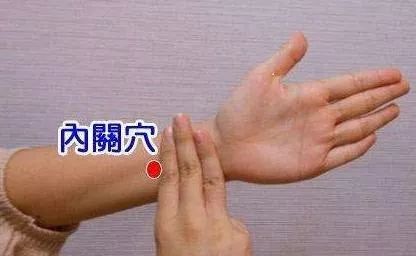
23. Laogong (Palace of Labor)
[Location] At the center of the palm, where the tip of the middle finger touches when the hand is closed.
[Indications] Coma from stroke, angina, hysteria, numbness in fingers, palm pain, etc.
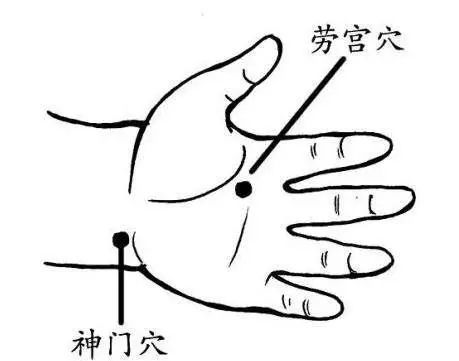
24. Shenmen (Spirit Gate)
[Location] At the ulnar side of the wrist crease, in the radial side depression of the flexor carpi ulnaris tendon.
[Indications] Heart pain, irritability, palpitations, forgetfulness, insomnia.
25. Waiguan (Outer Pass)
[Location] 2 inches above the wrist dorsal crease, between the radius and the ulna.
[Indications] Febrile diseases, headache, deafness, tinnitus, difficulty in flexing and extending the elbow.
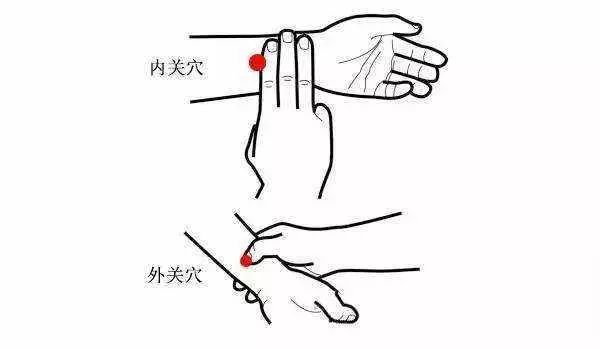
26. Niushang (Sprain Point)
[Location] With the elbow bent and palm facing inward, at the junction of the upper 1/4 and lower 3/4 of the line connecting Quchi and the wrist dorsal crease.
[Indications] Acute lumbar sprain.
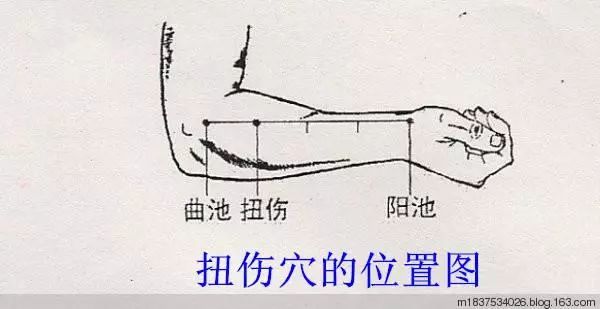
4. Common Acupuncture Points on the Lower Limbs
27. Huantiao (Jumping Circle)
[Location] At the junction of the outer 1/3 and inner 2/3 of the line connecting the highest point of the greater trochanter of the femur and the sacral hiatus.
[Indications] Low back and leg pain, sciatica, lower limb numbness, paralysis, etc.
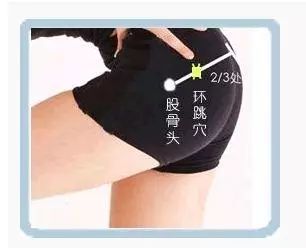
28. Xuehai (Sea of Blood)
[Location] 2 inches above the inner side of the patella.
[Indications] Menstrual irregularities, metrorrhagia, amenorrhea, inner thigh pain, etc.
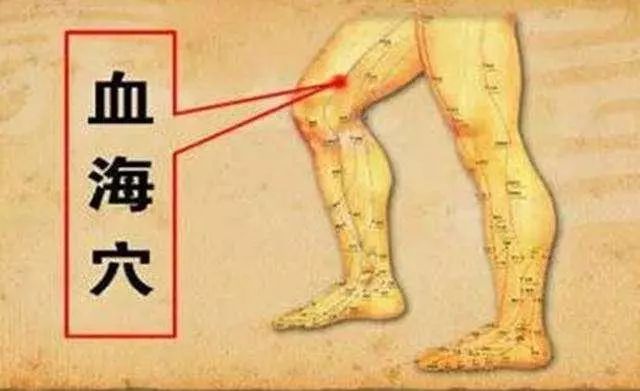
29. Zusanli (Three Miles Below the Knee)
[Location] 3 inches below the outer knee eye, about one finger width from the tibia.
[Indications] Spleen and stomach disharmony, nausea, vomiting, stomach pain, acute gastroenteritis, arthritis, lower limb paralysis, hemiplegia, etc.
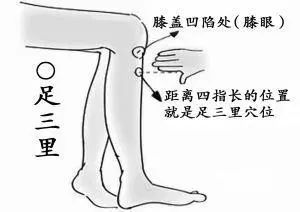
30. Yanglingquan (Yang Mound Spring)
[Location] With the knee bent, in the depression just below the head of the fibula.
[Indications] Liver and gallbladder diseases, hypertension, hemiplegia, lower limb numbness and pain.
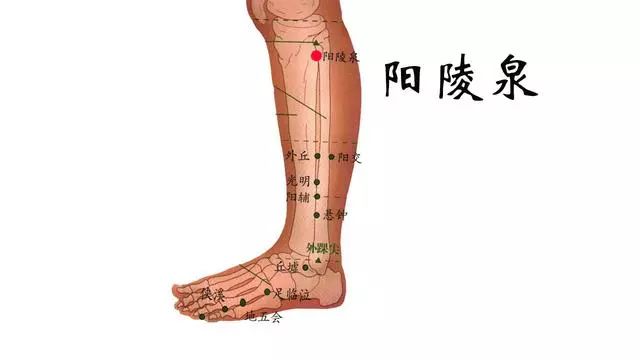
31. Weizhong (Middle of the Crook)
[Location] At the midpoint of the popliteal crease.
[Indications] Acute gastritis, vomiting, low back and leg pain, sciatica, arthritis, hemiplegia, low back pain, psoriasis, etc.
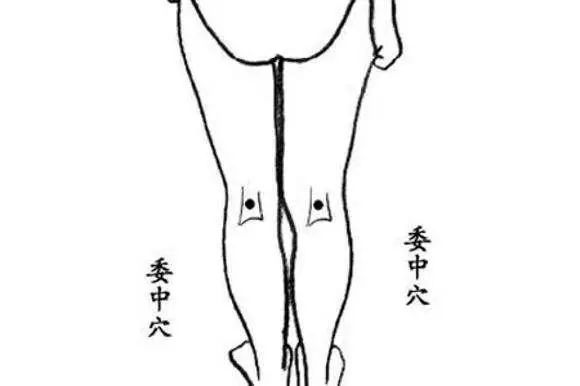
32. Chengshan (Supporting Mountain)
[Location] At the apex of the depression between the two heads of the gastrocnemius muscle.
[Indications] Low back pain, gastrocnemius muscle cramps, constipation, etc.
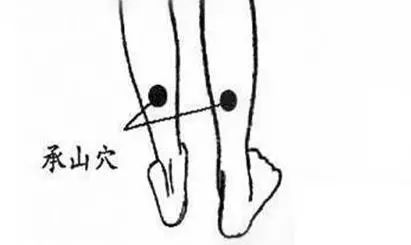
33. Sanyinjiao (Three Yin Intersection)
[Location] 3 inches directly above the highest point of the inner ankle, at the posterior border of the tibia.
[Indications] Urinary system diseases, reproductive system diseases, lower abdominal pain, diarrhea, eczema, neurodermatitis, urticaria, etc.
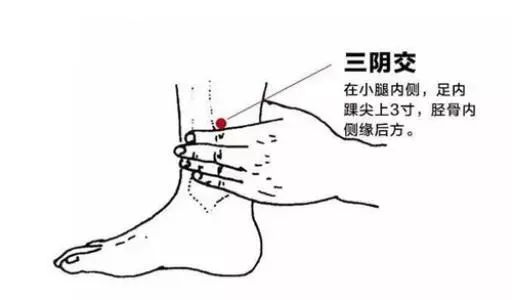
34. Xuanzhong (Suspended Bell)
[Location] 3 inches above the highest point of the outer ankle, at the posterior border of the fibula.
[Indications] Costal pain, fullness in the chest and abdomen, cramping pain in the feet and calves, hemorrhoidal bleeding, etc.
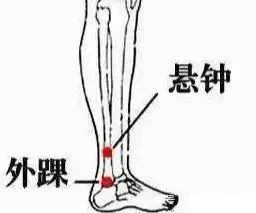
35. Yongquan (Gushing Spring)
[Location] On the sole of the foot, in the depression formed when the toes are flexed.
[Indications] Headache, dizziness, lightheadedness, sore throat, difficulty urinating, constipation, coma, etc.
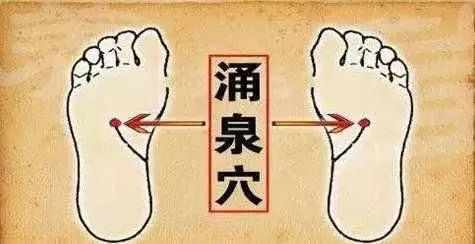
Many people find the concepts of TCM meridians and acupuncture point health maintenance to be mysterious and out of reach. In fact, the methods of acupuncture point health maintenance are very simple, and many techniques can be self-administered, such as massage, moxibustion, and cupping.
Acupuncture point therapy has indeed shown high effectiveness in treating diseases, which has been widely recognized. Recently, scientific methods have also been gradually used to analyze its effects.
In conclusion, simply put: Acupuncture points are located along pathways of energy flow, known as “meridians.” The correct term for acupuncture points should be “jingxue” (meridian points). If there are abnormalities in the internal organs, they will reflect on the corresponding meridians and further on the acupuncture points where energy flow is obstructed. Therefore, by stimulating these points, we can promote smooth energy flow and achieve therapeutic effects, which is the purpose of acupuncture point therapy.
Teaching someone to fish is better than giving them fish. By clarifying the locations of common acupuncture points and explaining them, we can impart basic health maintenance knowledge, enabling everyone to learn self-care!
— THE END —
▶ Copyright Statement:
1. Source/Network Edited by Bai Xiaolin
2. This platform aims to disseminate knowledge of TCM culture, and the copyright belongs to the relevant rights holders. We respect knowledge and labor; please retain copyright information when reprinting. If there are any improper uses, please feel free to contact us for negotiation. Contact (WeChat): 936532881
3. We welcome everyone to submit articles; submission email: [email protected]
